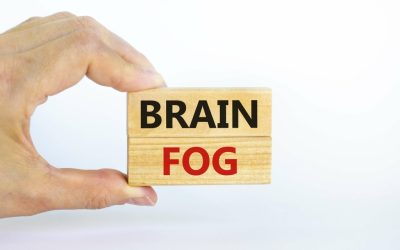She doesn’t recommend that patients go out and start drinking to decrease their risk of COPD, she adds. As a result, they eventually need to drink more to notice the same effects they once did. Excessive drinking may affect the consequences of combining marijuana with ecstasy fhe health your menstrual cycle and potentially increase your risk for infertility. If your body can’t manage and balance your blood sugar levels, you may experience greater complications and side effects related to diabetes.
How Do You Treat Alcohol-Related Lung Damage?
These include prominent roles for the second messengers calcium and nitric oxide, regulatory kinases including PKG and PKA, alcohol and aldehyde -metabolizing enzymes such as ALDH2. The role alcohol may play in the biology of airway mucus, bronchial blood flow, airway smooth muscle regulation and the interaction with other airway exposure agents, such as cigarette smoke, represent opportunities for future investigation. The first large population study that examined the relationship of alcohol consumption to airway obstruction was a cross-sectional analysis published by Cohen in 1980 (Cohen et al., 1980). This study used data from a cohort of 2,539 community dwelling adults that quantified alcohol intake, smoking, diet and other health factors and measured FEV1 on spirometry.
Chronic + binge alcohol exposure promotes inflammation and alters airway mechanics in the lung
Bronchoconstriction and wheezing following ingestion of alcoholic beverages is most likely related to non-alcohol congeners present in the beverages or the production of high concentrations of acetaldehyde in susceptible individuals with the low functioning ALDH2 genotype. Acetaldehyde is produced by the metabolism of ethanol through the action of alcohol dehydrogenases. Acetaldehyde has long been recognized as a trigger for asthma in Asians and is referred to as “alcohol-induced bronchial asthma” (Shimoda et al., 1996). The most susceptible individuals are Asians who have greatly reduced function of the enzyme aldehyde dehydrogenase isoform 2 (ALDH 2) and can be identified through genetic testing and/or ethanol challenge testing (Matsuse et al., 2001). About half of Japanese have inadequate ALDH2 activity and cannot effectively metabolize acetaldehyde. This results in facial flushing, wheezing and other undesirable side effects following the ingestion of modest amounts of alcohol (Gong et al., 1981).
Pulmonary Mechanics Measurements
These authors concluded that the use of ethanol as a carrier for inhaled drug formulations is unpredictable and potentially hazardous in asthmatics (Hooper et al., 1995). This is also potentially important because of the rapidly increasing production and use of ethanol as a fuel additive. Consumers of such fuels or workers involved with their production will likely be exposed to ethanol vapors often combined with other vapors (Chu et al., 2005). With AWOL alcohol is aerosolized through a nebulizer and has become fashionable in Europe and Asia as way to become intoxicated without the side effects of drinking (Press, 2004). The increase in the use of ethanol-supplemented fuels and the abuse potential of AWOL will likely stimulate more research in this interesting area. At this point it is safe to say that our knowledge about the influence of inhaled alcohol on airway function is unsatisfactory.
- However, the number of cells recovered in animals exposed to ethanol diet and ethanol binge was significantly increased by approximately 2 fold (47,545 ± 8324 cells).
- ARDS develops as a response to severe inflammation and other lung-related damage that can be caused by excessive alcohol.
- In 1789, Dr. Benjamin Rush, the first surgeon general of the United States, observed that individuals with an affinity for alcohol had a higher incidence of pneumonia and tuberculosis (Rush, 1808).
- In general, heavy alcohol use is now believed to be the be the cause of tens of thousands of lung conditions each year.
- Pneumoniae induces time-dependent release of IL-12 from T cells, which in turn drives T cell IFN-γ production.
The current study reveals novel findings that this pattern of alcohol exposure, in the absence of any secondary inflammatory insult caused mild neutrophilic inflammation 9 and 24 hours after ethanol binge, as well as exacerbated central airway resistance after methacholine inhalation. This animal model may be useful, and potentially more relevant, for identifying mechanisms by which alcohol abuse sensitizes at-risk individuals to ALI and ARDS. Aspiration events are compounded by pathologic changes in the oropharyngeal flora caused by alcohol abuse. Pneumoniae may be as much as four times higher in alcoholic compared with nonalcoholic patients (Fuxench-Lopez and Ramierz-Ronda 1978). This increased colonization by pathogenic organisms, combined with the acute intoxicating effects of alcohol and the subsequent depression of the normally protective gag and cough reflexes, leads to more frequent and severe pneumonias from gram-negative organisms.
The role alcohol may play in the pathobiology of airway mucus, bronchial blood flow, airway smooth muscle regulation and the interaction with other airway exposure agents, such as cigarette smoke, represent opportunities for future investigation. Collectively, these studies demonstrate that chronic alcohol ingestion induces an oxidized microenvironment within the lung that subsequently induces AM derangements, as manifested in an impaired capacity to phagocytose and clear bacteria from the alveolar space. Alcohol stimulates oxidative stress through multiple, and potentially interactive, mechanisms including oxidation of the GSH/GSSG redox status, decreased intracellular zinc, attenuated Nrf2, diminished GM-CSFRβ, depleted PPARγ, enhanced Noxes, and increased TGFβ1. Therefore, strategies to reverse any of these mechanisms for alcohol-induced exaggerated oxidative stress in the AM may improve lung immune function and susceptibility to developing respiratory infections in patients with a history of AUDs. Proposed pathophysiological sequence by which alcohol abuse renders the lung susceptible during acute inflammatory stresses such as infection (i.e., sepsis) and trauma.
Chronic alcohol intake also decreased alveolar binding of PU.1, a transcription factor responsible for GM-CSF activation. When the animals were treated with recombinant GM-CSF, alveolar macrophage bacterial phagocytic capacity, GM-CSF receptor expression, and PU.1 nuclear binding cocaine withdrawal symptoms going through cocaine detox were restored (Joshi et al. 2005). These studies offer the groundwork for understanding the importance of GM-CSF within the lung for the maturation and host immune function of the alveolar macrophage as well as the deleterious impact of chronic alcohol use on these processes.
Respiratory resistance (i.e., the real part of respiratory system impedence) was significantly elevated at all frequencies measured, further indicating increased resistance in the central airways (Figure 6). Airflow obstruction diseases continue to increase in prevalence and that chronic obstructive pulmonary disease (COPD) will become the third most common cause of death in the United States by the year 2020 (Mannino et al., 2003). Aside from smoking, which is a well-known risk factor for developing COPD, little is known about other factors that impact risk for developing airflow obstruction. The term “whiskey bronchitis” is an expression that was often used to describe the high prevalence of bronchitis in alcoholics (Lyons et al., 1986). Such common clinical observations likely prompted George Burch to write a provocative editorial in 1967 in the American Heart Journal entitled “Alcoholic lung disease-An hypothesis” (Burch and DePasquale, 1967).
The Centers for Disease Control estimates that 80,000 annual deaths in the United States are attributed to excessive alcohol ingestion, making it the third leading lifestyle-related cause of death (Mokdad, Marks, Stroup, & Gerberding, 2004). In 2006, excessive alcohol ingestion was responsible for ~$224 billion in healthcare costs, including emergency room and physician office visits (Bouchery, Harwood, Sacks, Simon, & Brewer, 2011). Compared to non-alcoholics, patients with a history of alcohol abuse are twice as likely to develop sepsis, and those with sepsis are twice as likely to develop acute respiratory syndrome (ARDS) (Jong, Hsiue, Chen, Chang, & Chen, 1995; Joshi & Guidot, 2007; Moss, 2005). Alcohol-induced lung injury and immune dysfunction contribute to a higher risk for developing respiratory infections, leading to increased morbidity and mortality in patients with a history of AUDs (Moss, 2005). As discussed previously, alcohol not only alters the environment of the alveolar space but also directly affects GM-CSF signaling, which regulates the maturation, terminal differentiation, and function of alveolar macrophages. Chronic alcohol ingestion downregulates the expression of GM-CSF receptors on the cell surface of the alveolar macrophages, thereby impairing their immune function (Joshi et al. 2005).
AUDs increase both the predisposition and illness severity of pneumococcal pneumonia infections, which may be due to the pro-inflammatory and oxidative stress response of AMs. This risk further is exacerbated by the negative effects of chronic alcohol ingestion on the lower airways. In particular, animal models have established that chronic excessive alcohol ingestion causes dysfunction of the mucociliary apparatus, an important host defense mechanism responsible for clearing harmful pathogens and mucus from the lower airways (Happel and Nelson 2005). An early experimental study in sheep investigating the effects of alcohol on ciliary beat frequency (CBF) demonstrated a dose-dependent effect, such that low alcohol concentrations actually stimulated CBF, whereas high concentrations impaired it (Maurer and Liebman 1988). Later mechanistic studies found that whereas short-term alcohol exposure causes a transient increase in CBF, chronic exposure desensitizes the cilia so that they cannot respond to stimulation (Wyatt et al. 2004). Alcohol-induced failure of the mucociliary system could interfere with the clearance of pathogens from the airways and thereby may contribute to the increased risk of pulmonary infections in people with chronic heavy alcohol use (Sisson 2007).
This is in contrast to our knowledge of alcohol intake and asthma from population studies. In patients with alcohol use disorder (AUD), alterations occur in the tight junctions between alveolar epithelial cells so that protein-rich fluid from the blood can more easily traverse the interstitial tissue and enter the lumen of the alveoli that is normally dry. These and other changes in alveolar epithelial cells predispose people with AUD to developing acute respiratory distress syndrome (ARDS) that is characterized by pulmonary edema. Brief exposure to moderate concentrations of alcohol stimulates cilia to beat faster through a nitric oxide-dependent mechanism (Sisson, Pavlik, & Wyatt, 2009).
These findings suggested that autonomic innervation and functional β-adrenergic receptors participate in alcohol-induced relaxation of airway smooth muscles. The applicability of this study, however, is uncertain since most of the bronchoreactivity of asthma occurs in the small airways and not the trachea. Furthermore, the role of adrenergic innervation, while important in the canine airway, is break the cycle of addiction with these strategies to keep dopamine in check minor in the regulation of human airways. Interestingly, Myou found that inhaled ethanol did not trigger bronchospasm in Japanese subjects with alcohol-induced asthma. Indeed, inhaled ethanol attenuated methacholine-induced bronchospasm in these asthmatics (Myou et al., 1996). This is likely due to the inability of the airway epithelium to significantly metabolize ethanol into acetaldehyde.
To prevent endogenous breathing effort, mice were given pancronium bromide (0.8 mg/kg i.p.) every 20 min until the completion of airway reactivity measurements. During the experiment, mice were given additional tribromoethanol to maintain heart rate at or below the baseline level. Following baseline assessment, measurements were then repeated following administration of increasing doses of aerosolized methacholine generated from solutions of 0, 6.25, 12.5, 25, or 50 mg/mL methacholine. Methacholine was aerosolized for 10 seconds from an Aeronib nebulizer that delivered 0.15 mL/min and respiratory parameters were repeatedly collected for a total of 15 measurements of each parameter. Lastly, there are animal data suggesting that alcohol can promote neurogenic-driven airway inflammation. Trevisani and colleagues demonstrated in guinea pigs that alcohol intake triggers airway inflammation via a transient receptor potential vanilloid-1 (TRPV1) resulting in a calcium-dependent release of neuropeptides that contracted airway smooth muscle (Trevisani et al., 2004).
Originally described by Ashbaugh and colleagues (1967), ARDS is characterized by alveolar epithelial and endothelial barrier disruption, dysfunction of the lipoprotein complex (i.e., surfactant) coating the lung surfaces, and intense inflammation. Together, these alterations profoundly disrupt gas exchange and cause severe respiratory failure. The findings reported here reflect how much has been learned in the past decade since it was first recognized that alcohol abuse increases the risk of ARDS, even in young and previously healthy people. The extensive research in this area suggests that although glutathione deficiency is a useful marker of severe structural and functional abnormalities in the alcoholic lung, treatment strategies necessary to modify the risk of lung injury will require more than glutathione replacement alone. Whereas oxidative stress is more directly involved in causing the pathophysiology of the alcoholic lung, the susceptibility to injury reflects cellular damage that cannot be quickly reversed with glutathione replacement alone.
This “recycling” of alcohol vapor results in repeated exposure of the airway epithelium to high local concentrations of alcohol (George et al., 1996). In this manner, the epithelium of the conducting airways is continually exposed to ethanol during alcohol ingestion. The potential influence of alcohol consumption on airway health and disease has been documented for a long time. Chronic alcohol ingestion constantly subjects the drinker’s airways to high concentrations of alcohol vapor, as best evidenced by the use of alcohol breath tests (i.e., Breathalyzer).






